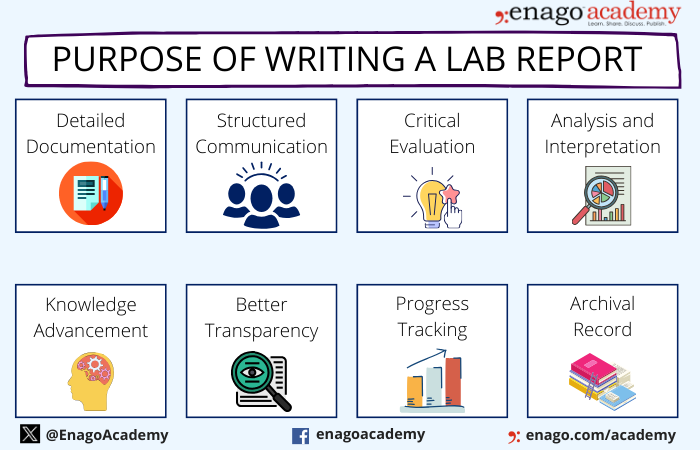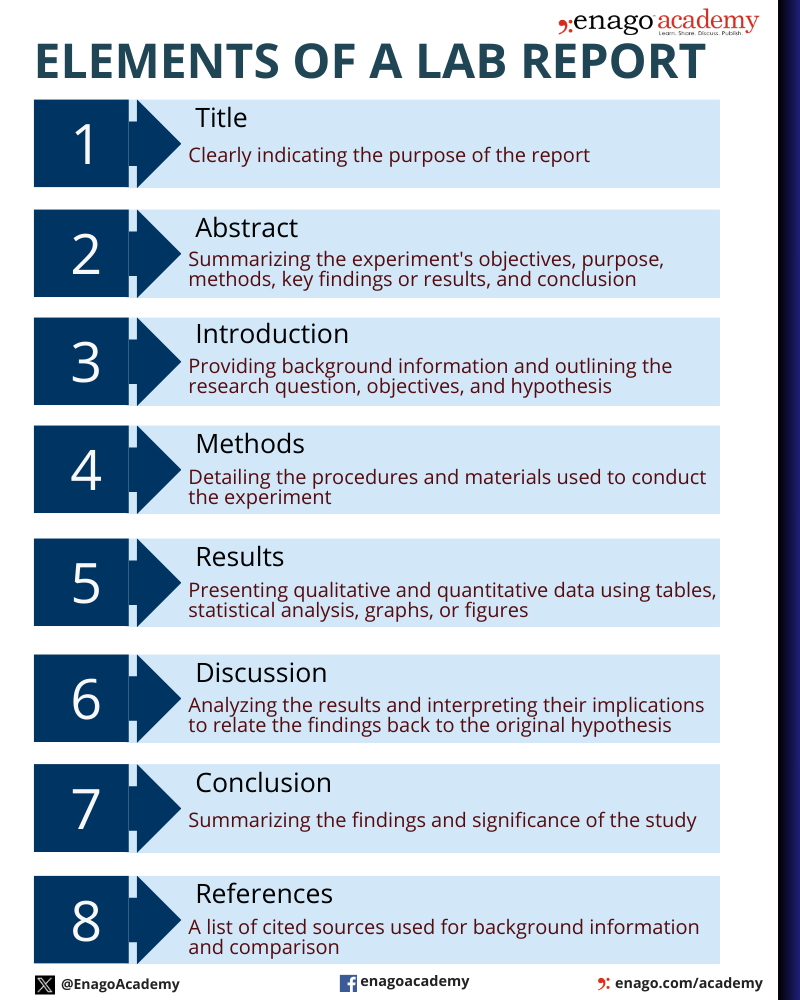How to Improve Lab Report Writing: Best practices to follow with and without AI-assistance

Imagine you’re a scientist who just made a ground-breaking discovery! You want to share your breakthrough with the world, but how? By writing a comprehensive lab report, of course. Communicating your research clearly and consistently is a crucial part of becoming a true researcher or increasing your academic literacy.
Lab reports are fundamental to scientific research, serving as a crucial means to communicate findings, methodologies, and conclusions. A well-written lab report is the key to unlock the door to scientific communication, allowing you to document your methods, present your findings, and have your work reviewed and replicated by others in the field.
But don’t be intimidated – writing a lab report is like following a recipe, with clearly defined sections and a standard format. So put on your lab coat, grab your pen (or laptop), and let’s dive into the exciting world of lab report writing!
What are Lab Reports
Lab reports are detailed documents that describe and analyze an experiment or scientific study that was conducted. It outlines the methodology, results, and conclusions of an experiment or research study. Furthermore, it formally communicates the scientific process and outcomes clearly and concisely. The purpose of a lab report are as follows:

Overall, lab reports are crucial for documenting, communicating, analyzing, and disseminating scientific research in a standardized and reproducible manner, ultimately driving the progress of science. However, an excellent lab report should have the following elements:

Because several elements of a lab report overlap with those of a research paper, they are often confused with each other. While both involve scientific writing, their purposes differ significantly.
Difference Between a Lab Report and a Research Paper
Research papers and lab reports are often conflated, leading to confusion. While a research paper presents new knowledge or theories, a lab report focuses on the specifics of an experiment and its results. Furthermore, lab reports are shorter than a research paper. Quite often, mentors or course instructors provides an experimental design and procedure. As a result, lab reports require less effort as your major task revolves around writing about how you performed the experiment and assessed the outcome. Contrastingly, a research paper requires more effort as you have to build an argument, combined with in-depth research and analysis of the data sources. Therefore, lab reports are usually shorter and easier to write as compared to a research paper.
Challenges in Writing Error-free Lab Reports
Writing error-free lab reports can be a daunting task, even for experienced researchers. Although manual writing and reviewing processes have been the traditional approach for report writing, they are subject to some limitations as follows:
1. Human Error
Even the most meticulous researchers can make mistakes or overlook errors, particularly when dealing with lengthy or complex reports.
2. Inconsistency
Without standardized templates or automated checks, formatting, terminology, and organizational structure can vary significantly between reports, even within the same research group.
3. Inefficiency
Manual writing, editing, and reviewing processes can be time-consuming and labor-intensive, potentially slowing down the dissemination of research findings.
4. Limited Scalability
As the volume of research and the number of lab reports increase, manual approaches become increasingly challenging and unsustainable, particularly in large research institutions or collaborative projects.
5. Lack of Real-time Collaboration
Traditional manual writing and reviewing processes often involve back-and-forth exchanges, making real-time collaboration and simultaneous editing difficult.
Furthermore, the above mentioned challenges can hinder the accurate and timely dissemination of research findings. Overcoming these hurdles is crucial to effectively communicate your scientific work. However, as these challenges become increasingly pronounced, highlighting the potential benefits of incorporating technological solutions to streamline the lab report writing process becomes necessary.
Traditional vs. AI-assisted Lab Report Writing
There are several differences between the traditional approaches to lab report writing and AI-assisted lab report writing in terms of the process, challenges, and potential outcomes.
| Traditional Approach | AI-assisted Approach | |
| Data Collection and Analysis | Researchers manually collect and analyze data, often using statistical software or spreadsheets. | AI models can assist in data collection, processing, and analysis, potentially identifying patterns or insights that humans may overlook. |
| Literature Review | Researchers conduct literature reviews by searching through databases, journals, and other sources to gather relevant background information and research context. | AI systems can rapidly search and synthesize relevant literature, generating summaries or identifying key findings more efficiently than manual searches.
|
| Writing Process | Researchers will have to draft, revise, and finalize the report sections (introduction, methods, results, discussion, etc.) based on their findings and interpretations. | AI language models can generate draft sections of the report based on the provided data and inputs, potentially saving time and reducing writer’s block. |
| Quality Assurance | Quality assurance relies on peer review, proofreading, and fact-checking by fellow researchers or subject matter experts. | Tools like Trinka AI can detect plagiarism, factual errors, or inconsistencies, complementing human peer review and fact-checking processes. |
| Challenges | The traditional approach can be time-consuming, prone to human error, and limited by the researcher’s knowledge and writing abilities. | Challenges include ensuring the AI model is trained on relevant and unbiased data, maintaining human oversight and interpretation, and addressing ethical concerns. |
While AI-assisted lab report writing can streamline certain processes and augment human capabilities, it is essential to strike a balance between leveraging AI’s strengths and maintaining human expertise, critical thinking, and oversight. The ideal approach may involve iterative collaboration between AI and human researchers, with AI handling data-intensive tasks and humans providing subject matter expertise, interpretation, and final review. Here are some best practices for integrating AI into the lab report writing process.
- Familiarize yourself with your institution’s policies and guidelines regarding the use of AI tools in academic work or in writing assignments.
- Utilize tools like TrinkaAI for proofreading, editing, and detecting plagiarism to refine your content.
- Clearly distinguish AI-generated content through proper citations, quotations, or other methods recommended by your institution.
- Critically evaluate and verify AI output before incorporating it into your lab report to ensure accuracy and relevance.
Although AI tools offer several benefits in writing lab reports, there are several ethical challenges associated with its use. Here are some tips for enhancing lab report writing with AI-assistance while minimizing ethical considerations.
1. Define Roles:
Establish distinct roles for AI and human writers. AI can be used for tasks like data analysis, literature review, and preliminary draft generation, while human experts should focus on critical thinking, interpretation, and final review. Furthermore, researchers/human experts must ensure the data used to train the AI model is accurate, unbiased, and representative of the research topic.
2. Maintain Transparency:
Disclose the use of AI in the research process, including the model’s capabilities, limitations, and potential biases. Additionally, document the AI model’s architecture, training data, and parameters to ensure reproducibility and facilitate peer review. Moreover, confirm if your institution or funding body permits the use of AI in report writing and clearly attribute the contributions of the AI model and human authors in the report.
3. Ensure Subject Matter Expertise:
Ensure that the AI model is trained on relevant scientific literature and data specific to the research domain. Human experts can curate and validate the training data. Therefore, verify and fact-check the information generated by the AI model against authoritative sources.
4. Address Ethical Considerations:
Adhere to ethical guidelines for AI-assisted writing, addressing concerns like authorship attribution, plagiarism, and bias. Also, scrutinize the generated content for potential data manipulation and address the ethical concerns related to its use.
5. Assure Quality:
Implement quality assurance measures, such as peer review, fact-checking, and plagiarism detection, to ensure the accuracy in the final report. Implement measures to detect and prevent plagiarism, as AI models may inadvertently reproduce copyrighted content. Furthermore, maintain human oversight and review throughout the AI-assisted writing process to ensure accuracy, relevance, and coherence.
6. Training and Education:
Provide training and education to human writers on how to effectively collaborate with AI systems, understand their capabilities and limitations, and interpret their outputs.
By following these practices, researchers can leverage the benefits of AI while maintaining high standards of quality, ethics, and transparency in their research report writing.
By combining the strengths of AI and human expertise through clear role definition, iterative collaboration, subject matter expertise, ethical guidelines, quality assurance, and proper training, researchers can streamline the lab report writing process while maintaining high standards of quality, accuracy, and scientific rigor.
Mastering lab report writing is a valuable skill for researchers across all levels. Whether you choose traditional methods or embrace AI-assisted approaches, understanding the fundamentals and best practices will lead to clearer, more impactful lab reports. Ready to craft a dynamic lab report? Kickstart your next project now!
Frequently Asked Questions
The structure of a lab report typically includes the title, abstract, introduction, materials and methods, results, discussion, conclusion, and reference.
There are several types of lab reports, each serving different purposes and formats depending on the specific requirements of the experiment and the field of study. Some common types are Formal Lab, Informal Lab Reports, Research Reports, Case Studies, Review Papers, Technical Reports, Field Trip Reports, and Posters and Presentations. Each type of lab report has its own format and style, tailored to the specific audience and purpose of the report.








